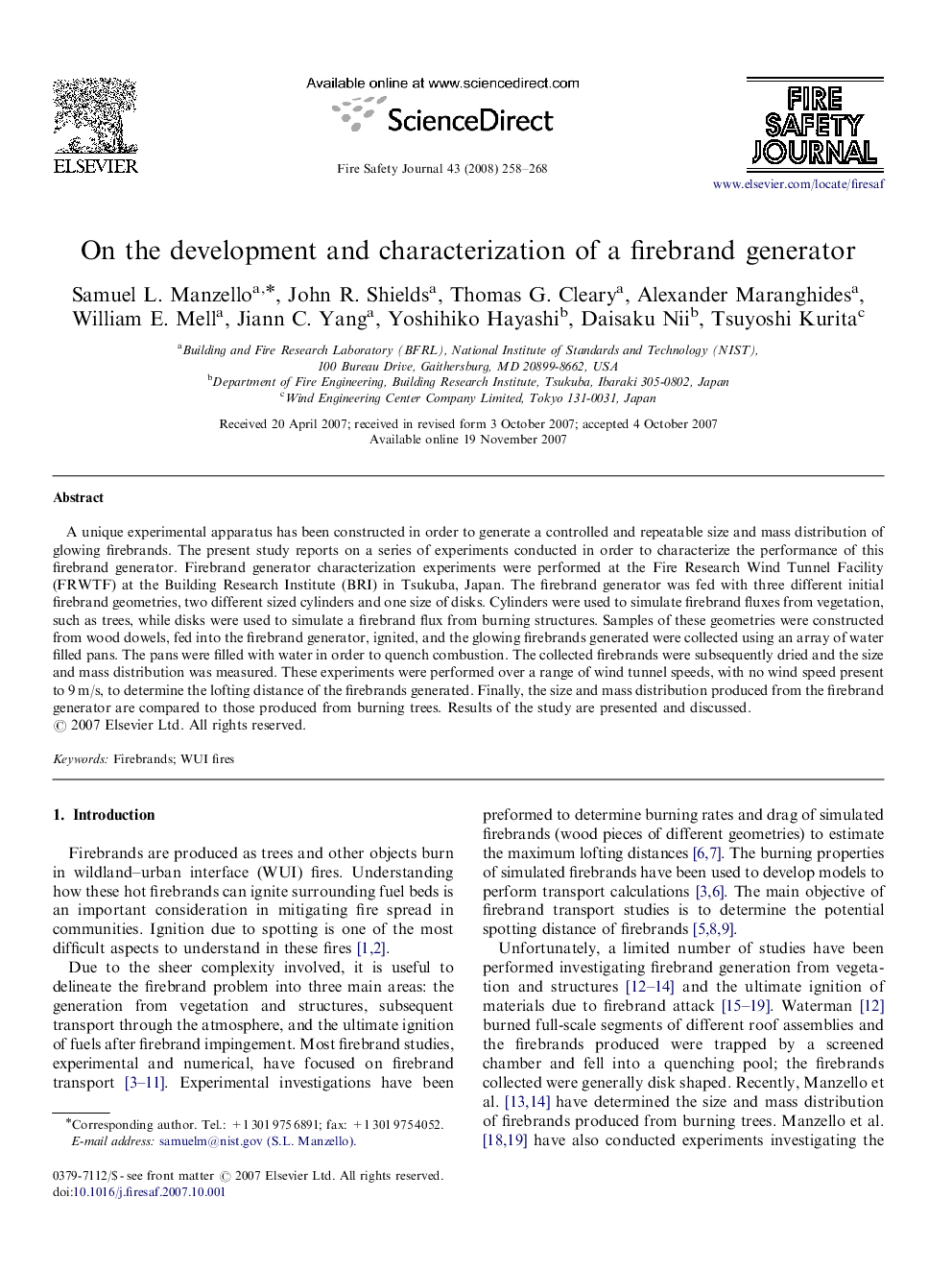| Article ID | Journal | Published Year | Pages | File Type |
|---|---|---|---|---|
| 270325 | Fire Safety Journal | 2008 | 11 Pages |
A unique experimental apparatus has been constructed in order to generate a controlled and repeatable size and mass distribution of glowing firebrands. The present study reports on a series of experiments conducted in order to characterize the performance of this firebrand generator. Firebrand generator characterization experiments were performed at the Fire Research Wind Tunnel Facility (FRWTF) at the Building Research Institute (BRI) in Tsukuba, Japan. The firebrand generator was fed with three different initial firebrand geometries, two different sized cylinders and one size of disks. Cylinders were used to simulate firebrand fluxes from vegetation, such as trees, while disks were used to simulate a firebrand flux from burning structures. Samples of these geometries were constructed from wood dowels, fed into the firebrand generator, ignited, and the glowing firebrands generated were collected using an array of water filled pans. The pans were filled with water in order to quench combustion. The collected firebrands were subsequently dried and the size and mass distribution was measured. These experiments were performed over a range of wind tunnel speeds, with no wind speed present to 9 m/s, to determine the lofting distance of the firebrands generated. Finally, the size and mass distribution produced from the firebrand generator are compared to those produced from burning trees. Results of the study are presented and discussed.
